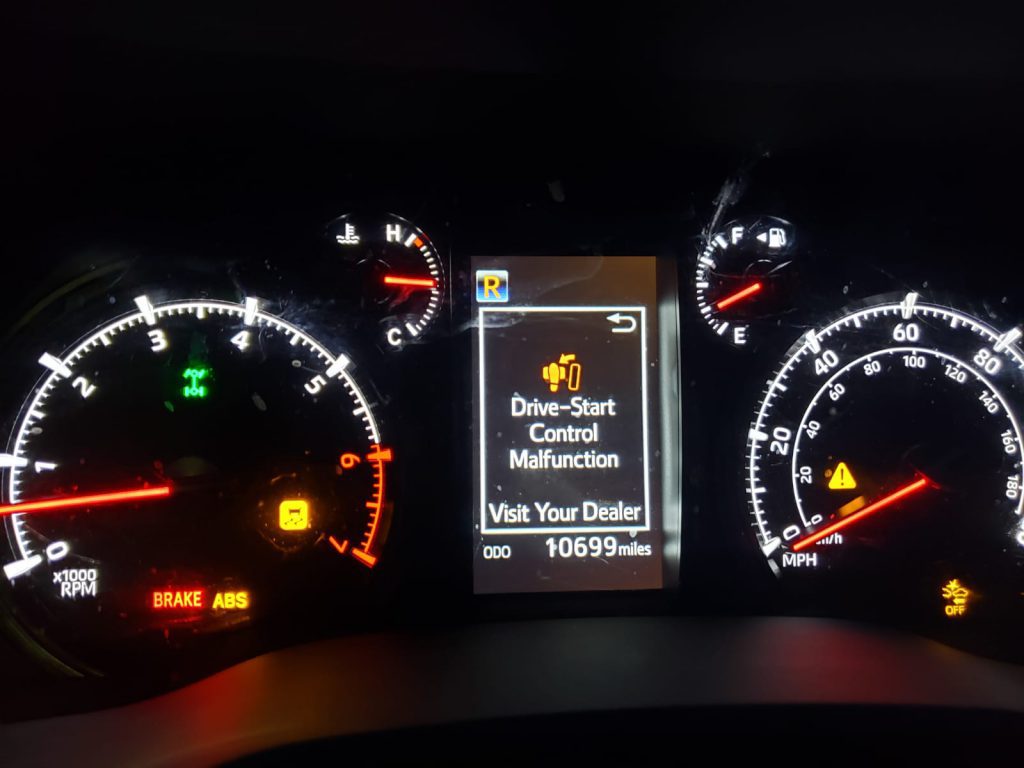The drive-start control malfunction is an outstanding safety feature that helps avoid accidents due to pedal mix-ups or speeding. Think of it like having your very own car detective looking out for you!
Unfortunately, like any part of your vehicle, your steering system can become compromised over time. Let’s discuss some of the most commonly occurring causes and how to resolve them.
Check the Battery
The drive-start control system relies on a battery. If this power source becomes weak or dead, this can trigger an error light and make starting your car difficult. If this occurs, either recharge or replace the battery to see if this solves the issue.
Damaged sensors are another cause of this error, providing signals to the ECU that controls different systems in your vehicle. When these sensors malfunction or become damaged or fail completely, this can also trigger the drive-start control malfunction error message.
Faulty wiring can also lead to this error message. Over time, wires may wear down due to rough road conditions or engine vibration and break, creating poor electrical connections which may result in drive-start control system failure or warning signals such as burning smells or smoke.
Problems could also stem from a defective ignition coil, leading to reduced power or misfiring in the engine, or from faulty sensors like those of traction control or ABS sending false signals to the ECU.
If the drive-start control system remains inoperable after you have tried resetting it, or an error light appears regardless, it would likely be best to bring your Toyota in for professional inspection. A mechanic can help repair or replace complex parts as needed while updating software updates so your car runs at peak condition. Think of hiring one as your car’s doctor – getting regular checks will keep it healthy!
Check the Wiring
If the battery or drive start control system aren’t receiving power properly, this could cause serious problems. A faulty wire could be the culprit – check its connections for looseness or corrosion; and replace as necessary.
Not only should the wiring be checked regularly, but so should its sensors. Malfunctioning or damaged sensors may send incorrect signals into your system, leading to potential malfunction. Therefore it’s advisable to get them professionally evaluated as well.
As well, it’s wise to inspect your ECU (Engine Control Unit), the main brain of your car. It receives signals from various sensors and controls the engine and other systems. If the ECU experiences issues, this may trigger error codes which lead to drive-start control malfunction.
If your Toyota Corolla displays the drive-start control malfunction warning light, it is wise to stop driving immediately and visit a professional mechanic as soon as possible. Doing this will prevent further damage to your vehicle and ensure its smooth functioning; similar to taking your child in for annual check-ups! An annual visit will allow doctors to detect small issues before they become major ones; regular checks with qualified mechanics can ensure your Toyota stays healthy and happy!
Check the Sensors
The drive-start control system utilizes various sensors to monitor various functions, including speed of your car. However, these sensors may become damaged or clogged over time and lead to the drive-start control malfunction message being displayed in your dash. A disconnected or damaged wire may also contribute to this problem.
Faulty engine management systems can cause all sorts of engine and vehicle-related issues, so it is wise to regularly have yours serviced by an experienced mechanic.
Whenever your vehicle doesn’t perform as it normally would, pay close attention to any warning lights and messages on its dashboard. These acts as little detectives for your car; letting you know if any issues with it need addressing.
When you encounter the drive-start control malfunction message on your dashboard, it indicates something is amiss with the electronic controls of your car. There could be various causes for this error; most commonly include wiring faults, sensor damage and software errors. A quick solution may involve cleaning or replacing sensors if needed.
Check the ECU
Your ECU serves as the brain of your car, sending signals between different systems. If it has difficulty doing that for any reason such as an improper ground connection or software glitch, an error message will display. Getting assistance from an experienced mechanic would help determine what’s amiss and provide solutions.
There are various solutions for eliminating this error message depending on its cause. For instance, if it’s due to blown fuses, replacing them with ones of equal amperage might work. Reprogramming or upgrading software on your ECU might also work; just make sure it’s done by an experienced professional so as to reduce any risks of error and ensure everything runs smoothly.
Dirty components may also contribute to this error, altering sensor signals. If this occurs in your vehicle, inspect its engine bay and cabin for signs of water intrusion or leaks that might compromise vital systems like your ECU and others. Repair any such issues immediately as soon as they arise to avoid further complications.

